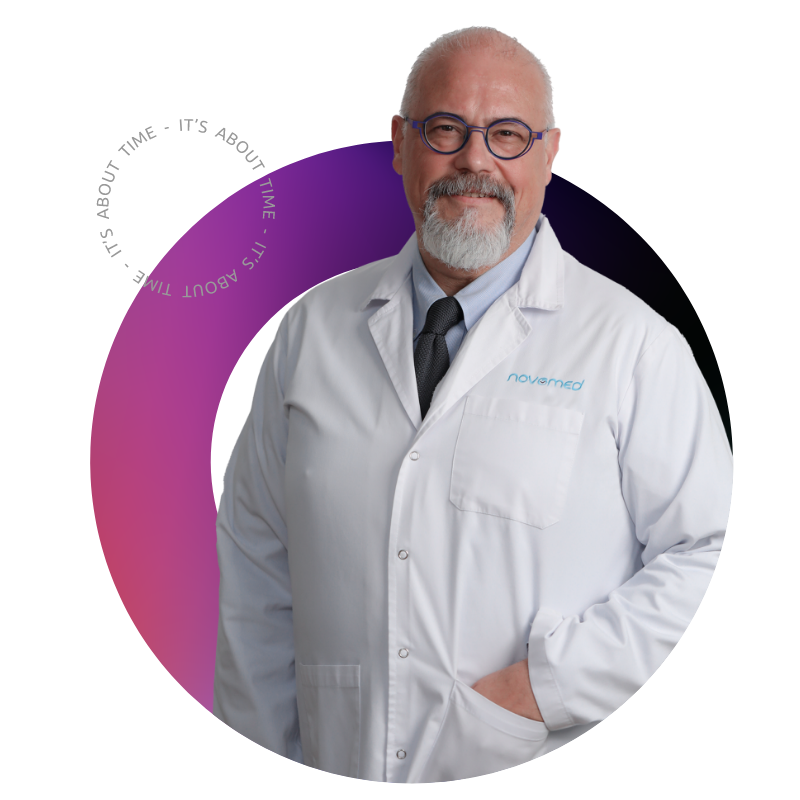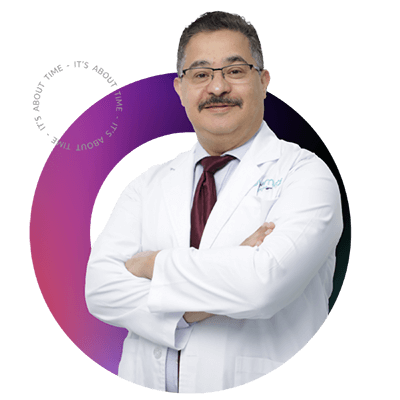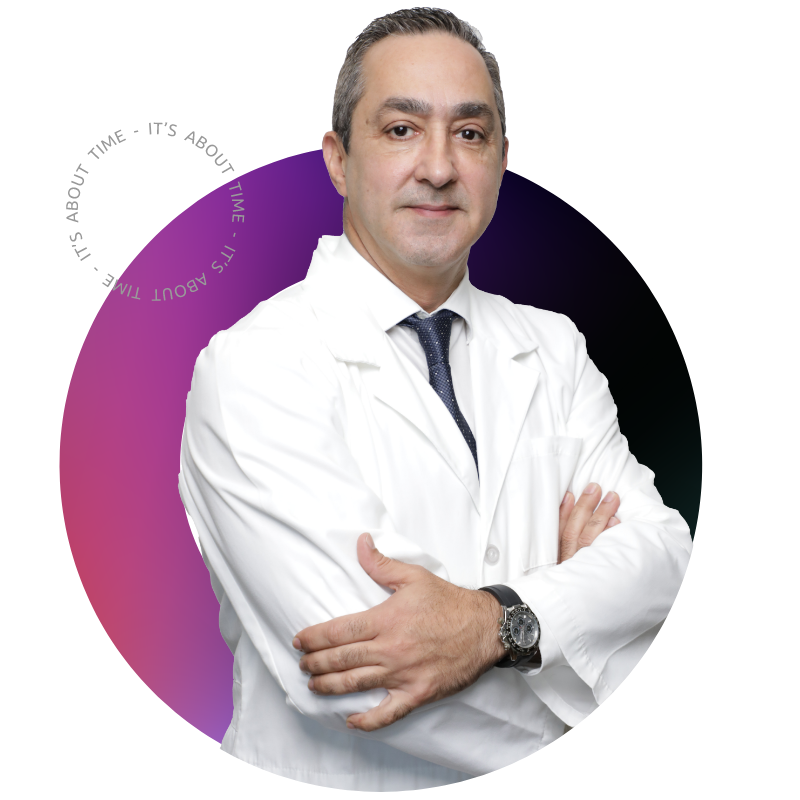Overview
Prostate cancer is the abnormal (malignant) cell growth in the prostate gland. The prostate is a small gland that takes the shape of a walnut and is positioned slightly below the bladder and in front of the rectum, enveloping the urethra. The prostate gland generates and preserves fluid that aids in the production of sperm.
Prostate cancer can progress slowly to the point where many men die of other causes before the prostate cancer creates substantial issues. On the other hand, many cases of prostate cancer are more active and can spread outside the prostate gland which can be fatal. Early detection and targeted treatment significantly enhance prostate cancer survival rate.
What causes prostate cancer?
Although the actual cause of prostate cancer is unknown, researchers investigate various risk factors to discover whether they contribute to prostate cells developing into cancer. These risk factors include:
Age: The risk of prostate cancer increases as you age; most cases are diagnosed in men over the age of 50.
Ethnic group: Black men have a higher risk of developing prostate cancer than white men.
Family history: The risk of prostate cancer increases if you have a family member who got prostate cancer before 60.
Obesity: Recent research suggests that there may be a link between obesity and prostate cancer, and a balanced diet and regular exercise may reduce its risk.
What are the symptoms of prostate cancer?
Prostate cancer symptoms do not develop until the prostate grows large enough to damage the tube that transports urine from the bladder to the urethra. Some prostate cancer symptoms include:
- Urge to urinate more often during the day or night (nocturia).
- Difficulty starting or stopping urination.
- Difficulty emptying your bladder.
- Noticing blood in your pee or sperm.
- Pain or burning sensation when urinating or ejaculating.
How is prostate cancer diagnosed?
- Digital rectal examination (DRE)
During this procedure, the doctor wears a medical glove and lubricates, then inserts his finger into your rectum to detect lumps and other abnormalities in the prostate that could be cancerous. If your test results are positive, the DRE can sometimes assist in determining if cancer is confined to one side of the prostate, both sides, or has spread to adjacent tissues.
- Prostate-specific antigen (PSA) test
A PSA test analyzes prostate-specific antigen (PSA) blood concentration, a chemical produced mainly by the prostate. It’s important to note that PSA levels may be high in men who have a condition known as “benign prostatic hyperplasia,” which causes infection or inflammation of the prostate.
- Prostate biopsy
The doctor uses an ultrasound probe to examine the prostate and guide the biopsy. You’ll lie on your side so the probe can be inserted easily into the rectum. The doctor uses ultrasonography to obtain an image of the prostate and assess the prostate gland’s size, shape, and abnormalities. They will also search for signs that could indicate malignancy.
A needle is then placed through the probe to numb (anesthetize) the prostate gland, and the doctor will then use a biopsy tool to extract tiny parts of your prostate. The amount of tissue taken is determined by the gland’s size, PSA values, and previous biopsies.
How is prostate cancer treated?
- Watchful Waiting
This approach is ideal for older men who don’t experience symptoms that interfere with their everyday activities. If the cancer is detected early on and isn’t causing any health problems, the doctor may recommend not going through treatment and waiting to see if cancer symptoms advance gradually. Additionally, your doctor may advise watchful waiting if your overall health condition is not fit for undergoing cancer therapy.
- Active Surveillance
Active surveillance aims to avoid unnecessary treatment of harmless tumours while still providing timely treatment to those who need it. This approach includes performing PSA tests, MRIs, and biopsies regularly to detect any signs of disease progression as soon as they start.
- Radical Prostatectomy
This procedure is suitable for treating prostate cancer that has not spread externally or beyond the prostate. However, radical prostatectomy carries several complications, including involuntary urination and erectile dysfunction, and in rare instances, life-threatening consequences.
Noting that prostate cancer is curable following treatment, your doctor should be able to explain your risk of cancer recurrence depending on a variety of criteria, including the stage of disease progression.
Although undergoing radiation therapy following prostatectomy can improve the chances of recovery, the patient won’t be able to have children following radical prostatectomy. Thus, those desiring to have children must preserve a sample of sperm before the operation in order to use it for in vitro fertilization (IVF) later.
- Radiation Therapy
Radiation therapy entails using high-energy radiation to destroy cancer cells and can be used to slow the progression of metastatic prostate cancer and alleviate symptoms. The patient typically receives radiation therapy over multiple sessions, five days a week, for 4 to 8 weeks.
Long-term side effects of radiation therapy can include erectile dysfunction (impotence), while short-term effects of radiation therapy include the following: Discomfort in hips/buttocks area. – Diarrhea. – Pubic hair loss. – Fatigue and tiredness. – Bladder lining inflammation – can cause pain when urinating and a frequent need to pass urine.
- Hormonal Therapy
Often used in combination with radiation therapy, hormonal therapy treats prostate cancer, relieves symptoms, and slows cancer progression by controlling the growth hormones of cells in the prostate.
Hormone therapy also blocks testosterone progression, either by stopping its production or preventing your body from using testosterone.
Hormone therapy can be given to the patient as follows:
- Hormone injections: aim to stop the body’s production of testosterone.
- Hormone tablets: reduce the production of testosterone, or its effectiveness in the body
The primary adverse effects of hormonal therapy are related to its impact on testosterone and often resolve when hormone therapy is finished and include the following:
- Fluctuations in body temperature
- Sweating
- Gaining weight
- Breast swelling and discomfort
Although surgical removal of the testicles (orchiectomy) is considered a viable alternative to hormone therapy, this procedure does not cure prostate cancer, rather it limits cancer’s growth and aggressive symptoms.
- Transurethral Resection Of The Prostate (TURP)
Transurethral resection of the prostate is a procedure that can help reduce pressure in the tube that transfers urine from the bladder to outside the penis (urethra), hence alleviating any urination-related discomfort. For TURP, the doctor inserts a thin metal wire with a loop at its end to extract parts of the prostate.
- High-Intensity Focused Ultrasound (HIFU)
Ultrasound is occasionally used to treat local prostate cancer that has not progressed beyond the prostate. After inserting an ultrasonic probe into the rectum, high-frequency sound waves are fired through the rectal wall.
These sound waves destroy cancer cells in the prostate gland by heating them to a high temperature. Since the treatment only targets the cancer area only and not the entire prostate, the risks of side effects are lower with HIFU technology than with conventional therapies. However, adverse effects can include erectile dysfunction or involuntary urination.
- Cryotherapy
Cryotherapy is a technique that uses low temperatures to freeze cancer cells until they are destroyed. It is usually effective in treating prostate cancer that has not developed in other body parts.
Cryotherapy involves using cryogenic injections into the prostate gland through the rectal wall to freez the prostate gland until the cancer cells are eliminated; however, some healthy cells may also be compromised in the process.
- Chemotherapy
Chemotherapy can help treat advanced prostate cancer stages that have spread to other body parts (metastatic prostate cancer). Chemotherapy kills cancer cells by stopping their multiplying process. It also aims to reduce painful cancer symptoms so that patients can go about their daily lives smoothly. Side effects may include:
- Infections
- Fatigue And Tiredness
- Hair Loss
- Mouth ulcers
- Anorexia
- Nausea
- Vomiting
Book your appointment at Novomed today!
To book an appointment with one of our expert urologists in Dubai or for more information about prostate cancer Treatment in Dubai, call us toll-free on 800 (NOVO) 6686 or click the live chat icon at the bottom of the screen.




























